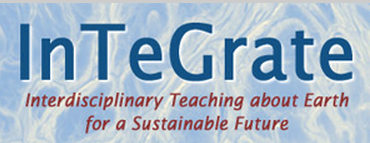Using Climate of Change in a Non Majors Sustainability Course
Author(s): Stefanie Kring
Clarkson University
1001 total view(s), 317 download(s)
BY 115 EXAM 4 2018.docx(DOCX | 500 KB)
Instructor Story.docx(DOCX | 16 KB)
- License terms
Description
Introduction to Environmental Sustainability (BY 115) is a course that is intended for non-science majors which provides a foundation in environmental science and sustainability. One of my goals for this course is for students to leave the course with a greater understanding of climate change, both natural and anthropogenic in origin. Many students have a basic understanding of climate change, but do not truly grasp the complexities. In this course, we begin with an overview of climate change, which allows students to relate it to other concepts presented thereafter (i.e. biogeochemical cycles, renewable energy, etc.). We then conclude the semester with a more in depth examination of climate change, which includes how it is monitored, long and short term climate variability, and impacts. This is the point in the semester when the Climate of Change module was implemented.
Units 1-4 were used in class over a two-week time period. Unit 6 was assigned as an out of class activity, and also provided an opportunity for me to assess how students felt about the module and what they had learned. For the units with multiple case studies, we did the first case studies but not the second due to time constraints.
My main goal was for my students to leave the course with a greater understanding of climate change, and its complexities. I believe that this goal was achieved. Instead of covering a wide range of concepts that would typically done in a course of this kind, at this point in the semester, we went into more depth on a few key concepts. Many students reported on the assessments, that they thought they understood climate change but realized that they didn’t know as much as they thought they did. Also, they were familiar with El Nino and La Nina, but didn’t understand the science behind these phenomena. Many reported understanding these concepts better after the completion of the course.
Cite this work
Researchers should cite this work as follows:
- Kring, S. (2018). Using Climate of Change in a Non Majors Sustainability Course. InTeGrate FMN (2018), QUBES Educational Resources. doi:10.25334/Q4NM5B
